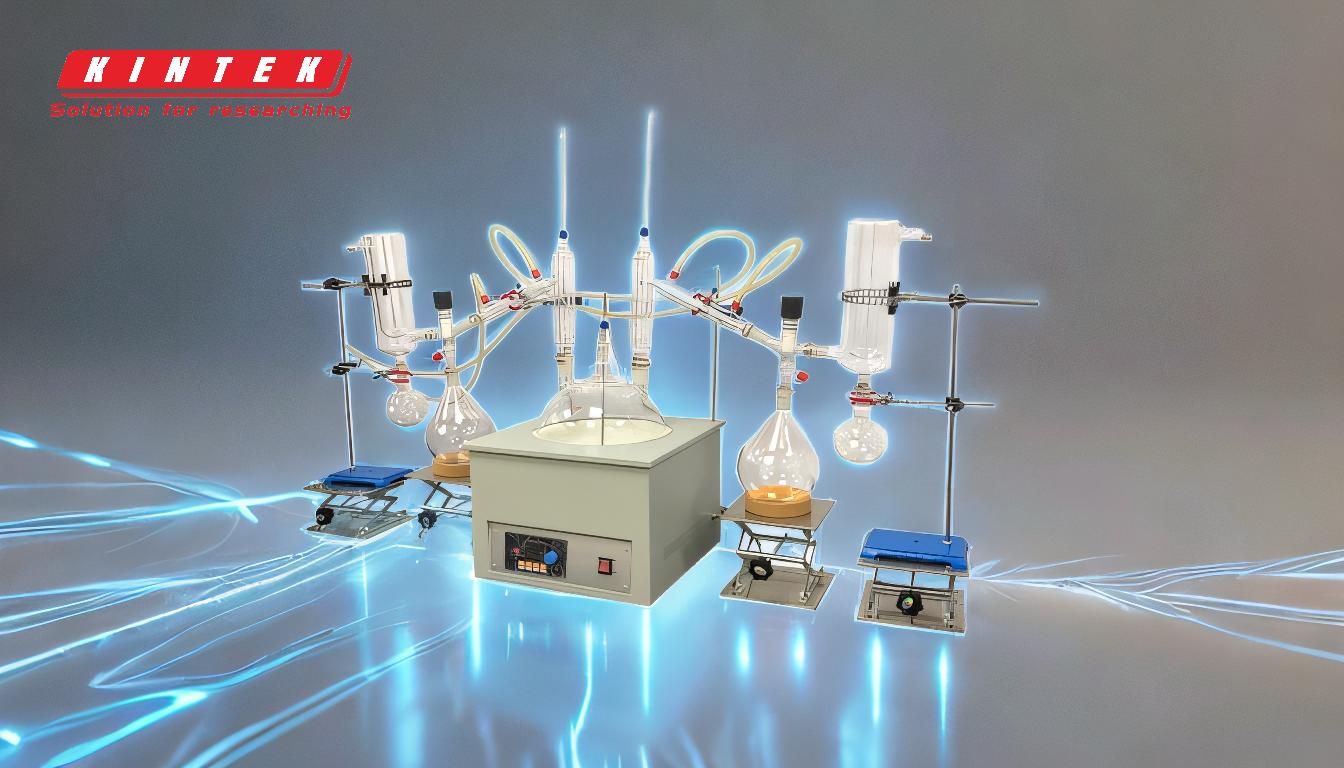Distillation is indeed an energy-intensive process, primarily because it involves heating a liquid mixture to separate its components based on their different boiling points. The energy consumption is significant due to the need to vaporize the liquid, which requires a substantial amount of heat, and then condense the vapor back into liquid form, which requires cooling. The energy intensity can vary depending on the specific application, such as in the petrochemical industry, water purification, or the production of alcoholic beverages. However, advancements in technology and process optimization have been made to reduce the energy consumption of distillation processes.
Key Points Explained:

-
Energy Consumption in Distillation:
- Distillation requires heating the liquid mixture to its boiling point to create vapor. This phase change from liquid to vapor is highly energy-intensive.
- The energy required is proportional to the heat of vaporization of the components in the mixture, which can be substantial for many common chemicals.
-
Factors Affecting Energy Intensity:
- Boiling Points: The higher the boiling points of the components, the more energy is required to reach and maintain those temperatures.
- Purity Requirements: Higher purity requirements often necessitate multiple distillation steps or more precise control, increasing energy use.
- Scale of Operation: Larger-scale operations can sometimes be more energy-efficient due to economies of scale, but they still consume significant amounts of energy overall.
-
Applications and Their Energy Demands:
- Petrochemical Industry: Distillation is a key process in refining crude oil into various products like gasoline, diesel, and jet fuel. This industry is one of the largest consumers of energy for distillation.
- Water Purification: Distillation is used to produce pure water, especially in areas where other purification methods are not feasible. The energy required can be high, especially if the water source has a high concentration of impurities.
- Alcoholic Beverage Production: Distillation is used to increase the alcohol content of beverages. The energy consumption here is generally lower compared to industrial applications but is still significant.
-
Technological Advances to Reduce Energy Consumption:
- Heat Integration: Techniques like heat exchangers can recover and reuse heat from the distillation process, significantly reducing energy consumption.
- Advanced Distillation Techniques: Methods such as vacuum distillation or membrane distillation can lower the boiling points of components, reducing the energy needed.
- Process Optimization: Improved control systems and process design can minimize energy waste and improve overall efficiency.
-
Environmental and Economic Impacts:
- The high energy consumption of distillation contributes to greenhouse gas emissions, especially when fossil fuels are used as the energy source.
- Energy costs are a significant portion of the operating expenses for industries that rely heavily on distillation, making energy efficiency a critical factor for economic sustainability.
In summary, distillation is an energy-intensive process due to the need to vaporize and condense liquids. However, ongoing technological advancements and process optimizations are helping to reduce the energy footprint of distillation across various industries.
Summary Table:
| Aspect | Details |
|---|---|
| Energy Consumption | High due to vaporization and condensation processes. |
| Key Factors | Boiling points, purity requirements, and scale of operation. |
| Applications | Petrochemical, water purification, and alcoholic beverage production. |
| Technological Advances | Heat integration, advanced distillation techniques, and process optimization. |
| Environmental Impact | Contributes to greenhouse gas emissions and high operating costs. |
Learn how to optimize your distillation process—contact our experts today!












